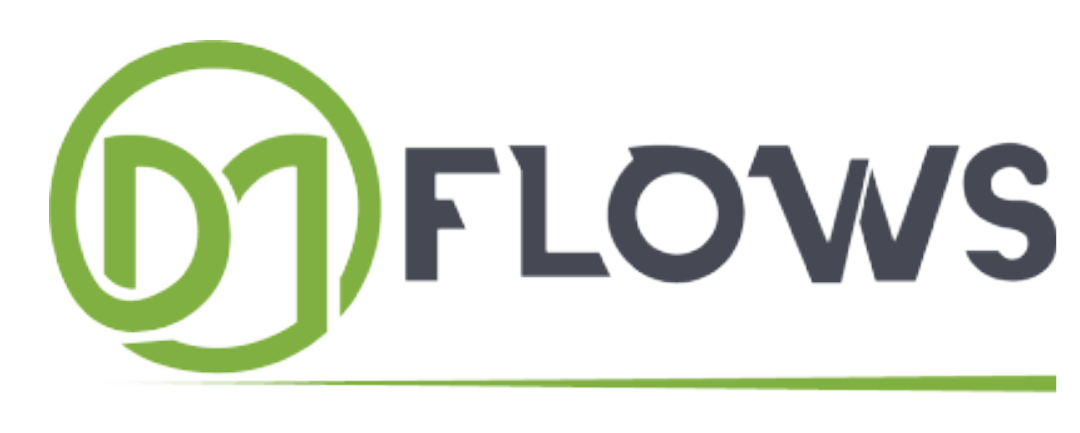SEO Timeline And Strategy
SEO timeline is the time period in-between when we start seeing noticeable results after doing SEO efforts all the way to our SEO goal. SEO is not a one-size-fits-all approach. Each website, industry, and target audience comes with unique challenges and opportunities. Understanding the timeline for SEO and the factors that influence it can help businesses set realistic expectations and design a winning strategy.
How long does SEO take?
SEO when done right and with white-hat techniques, takes between 3 and 6 months to start showing promising results. Depending on the industry and business model, it can take up to a year to reach stability. SEO requires patience and consistency.
Why does SEO take time?
Good things take time, SEO is inherently a gradual process because it focuses on building trust and authority over time. Search engines like Google prioritize websites that demonstrate consistent, high-quality content and positive user experiences. Here are key reasons why SEO requires time:
Search Engine Crawling and Indexing
Search engines take time to crawl, index, and rank web pages. Depending on the size of your site and the frequency of updates, this process may vary.
Building Domain Authority
Domain authority improves as your site gains backlinks, consistent traffic, and positive user engagement. This is not instantaneous and often requires months of dedicated effort.
Competitive Landscape
If your target keywords are highly competitive, it will take longer to outperform established players in your industry.
What Factors Are Involved In SEO Timeline
Several factors influence how long SEO takes to show results. Here’s a breakdown:
1. Website Age and History
New Websites: Take longer to gain traction since they have no established authority.
Older Websites: May see quicker results if they already have a solid foundation, but past penalties or poor practices can slow progress.
2. Competitiveness of Keywords
High-Competition Keywords: Require more time and resources due to stiff competition from established sites.
Long-Tail Keywords: Easier to rank for, often producing quicker results.
3. Quality and Quantity of Content
Consistent Content Creation: Helps search engines recognize your site as a reliable resource.
Depth and Relevance: Well-researched, detailed content performs better in rankings.
4. Technical SEO Issues
Site Speed and Mobile Optimization: Directly impact user experience and rankings.
Crawlability and Indexability: Ensure that search engines can access and understand your site.
5. Backlink Profile
Quality Over Quantity: High-quality backlinks from reputable sites boost rankings faster than numerous low-quality links.
Natural Growth: Avoids penalties and builds sustainable authority.
What happens in 6 months SEO period
SEO campaigns within a 6-month period typically follow a structured roadmap. Here’s what to expect at each stage:
Month 1: Initial Setup and Planning
Site Audit: Identifying technical issues, such as broken links, duplicate content, and slow page speeds.
Keyword Research: Uncovering keywords that align with your business goals.
Competitor Analysis: Understanding what your competitors are doing right and finding opportunities to outperform them.
Detail: The first month of your SEO campaign should prioritize technical SEO and foundational keyword research. A technical SEO audit is essential to identify problems that could hinder your site’s performance. Use tools like Google Search Console or Ahrefs to check for issues such as slow page load speeds, broken links, duplicate content, or improper URL structures. Ensure your website is mobile-friendly, as Google’s mobile-first indexing emphasizes mobile optimization. Additionally, check for crawl errors and ensure that important pages are indexed by search engines.
Along with technical SEO, keyword research is crucial. This involves discovering the keywords your target audience is searching for and which are likely to bring traffic. You can use tools like Google Keyword Planner, SEMrush, or Ahrefs to find both short-tail and long-tail keywords. Group keywords by topic and search intent (informational, navigational, transactional) to create content around them. Competitive analysis is also vital—identify top-ranking competitors and analyze their keywords, content, and backlink strategies. This will help you understand the competitive landscape and uncover opportunities for ranking improvement.
Month 2: Technical SEO Improvements
Fixing Errors: Addressing site issues identified in the audit.
Improving Website Structure: Making navigation more user-friendly.
Mobile Optimization: Ensuring the site performs well on all devices.
Detail: Once the technical setup is in place, Month 2 focuses on optimizing the content and structure of your website. Start with on-page SEO elements: optimize your title tags, meta descriptions, header tags, and URLs. Ensure your target keywords appear in these elements, as they help search engines understand your page’s relevance. Craft unique, compelling meta descriptions that encourage clicks from search results. Keep title tags concise and relevant to the content, while aligning with search intent.
An often-overlooked aspect of on-page SEO is internal linking. A solid internal linking structure helps search engines crawl your site more effectively and distributes link equity across pages. Link relevant pages together with keyword-optimized anchor text to boost ranking potential. Content optimization is also key during this phase. Review your existing content and ensure that it’s aligned with your target keywords, including strategic use of primary and secondary keywords. Update old articles to ensure they reflect the latest information and match search intent.
Lastly, ensure your content is user-friendly. This involves creating easily scannable text, adding internal and external links, and using multimedia like images and videos to increase engagement. The goal is to make your content not only search-engine friendly but also highly engaging for users.
Month 3: Content Strategy and Creation
Developing Content: Writing blog posts, articles, and landing pages targeting chosen keywords.
On-Page Optimization: Ensuring all content aligns with SEO best practices, such as proper use of headings and internal linking.
Improving Existing Content: Updating older posts for relevance and SEO value.
Detail: The third month is all about creating fresh, high-quality content and optimizing existing material. Content creation is central to SEO success, as search engines reward sites with valuable, informative, and comprehensive content. Begin by creating long-form articles, blog posts, or landing pages that address the needs and questions of your audience. Use your keyword research to ensure that your content aligns with the search terms your target audience is looking for.
Content should be created with search intent in mind. If someone is searching for a “how-to” guide, provide in-depth, step-by-step instructions. If they are looking to buy a product, ensure that your product descriptions and landing pages are optimized to match transactional intent. Additionally, focus on E-A-T (Expertise, Authoritativeness, Trustworthiness), especially for competitive niches, by producing content backed by credible sources and expert knowledge.
Don’t forget to optimize your content. Use keyword optimization techniques to include target keywords naturally within the body, headers, and image alt text. Incorporate multimedia such as images, infographics, and videos, which enhance user engagement and time on page. Additionally, regularly review your content to ensure that it remains relevant and up-to-date. Outdated content can harm rankings, so refresh old articles by adding new information, statistics, or insights.
Building a content calendar is essential to stay consistent. A regular publishing schedule helps with SEO, as search engines prefer active, regularly updated websites. Aim to release a mix of content types, including blog posts, how-to guides, case studies, and product reviews, to appeal to a wide range of search queries.
Month 4: Off-Page SEO and Link Building
Outreach Campaigns: Building relationships with authoritative sites for backlinks.
Guest Blogging: Contributing to reputable platforms to gain exposure and links.
Local SEO Efforts: Optimizing for local searches if applicable.
Detail: In Month 4, the focus shifts to building backlinks, which are crucial for improving domain authority and ranking in search results. Backlinks signal to search engines that your content is trustworthy and valuable. A robust backlink profile can significantly boost your site’s credibility.
Start by developing a link-building strategy. Look for opportunities to get backlinks from authoritative websites in your niche. One way to earn backlinks is through guest posting, where you write articles for other sites and include a link back to your own. Outreach is another effective method: reach out to influencers, bloggers, and website owners and ask them to link to your content. Offer them value in return, such as unique content or collaboration.
Content marketing is also a great way to build backlinks. Create link-worthy content, such as comprehensive guides, original research, or case studies that naturally attract backlinks from other websites. The more valuable and unique your content is, the more likely others will want to reference it.
Another strategy is broken link building, where you find broken links on other websites and offer your own relevant content as a replacement. This provides a win-win situation: the website owner fixes their broken links, and you gain a new backlink.
Finally, monitor your backlinks using tools like Ahrefs or Moz. Ensure that the backlinks you acquire are of high quality and relevance. Avoid low-quality links, as they can harm your site’s SEO rather than help it.
Month 5: Tracking Progress and Adjustments
Monitoring Analytics: Using tools like Google Analytics to measure traffic, bounce rates, and keyword rankings.
Making Adjustments: Refining strategies based on performance data.
Competitor Reassessment: Adjusting tactics based on competitor activities.
Detail: By Month 5, you should have implemented several SEO strategies. Now it’s time to evaluate your progress and adjust based on real data. Use Google Analytics and Google Search Console to monitor the performance of your website. Focus on traffic patterns, bounce rates, time on site, and other key metrics. These insights can reveal which pages are performing well and which ones need improvement.
Track your keyword rankings regularly to see if you’re moving up for your target terms. If certain keywords are underperforming, you might need to optimize your content further or adjust your keyword targeting. Evaluate click-through rates (CTR) from search results to determine if your meta descriptions and titles need refinement to improve engagement.
Analyzing user behavior is another key part of performance monitoring. Are visitors engaging with your content? Are they bouncing off quickly? If so, you may need to improve on-page elements like headings, internal links, or call-to-action buttons. Heatmaps or session recordings can provide insights into where users are clicking and how they’re navigating your site.
Technical issues should also be regularly reviewed. Run another technical SEO audit to uncover any new problems, such as slow loading pages or new crawl errors. Fix these promptly to maintain optimal site performance.
Finally, A/B testing is a great way to refine elements of your website. Test variations of title tags, CTAs, and other key elements to see what resonates best with your audience and drives higher engagement.
Month 6: Scaling and Future Planning
Content Expansion: Creating additional high-quality content to target new keywords.
Refining Strategies: Doubling down on tactics that yield the best results.
Long-Term Roadmap: Planning for the next phase of SEO growth.
Detail: In Month 6, you’ll begin refining your strategy based on the insights gained from your performance monitoring. Now that you’ve built a solid SEO foundation, focus on conversion rate optimization (CRO) to ensure that your SEO efforts translate into tangible business results, such as leads or sales.
Start by optimizing your landing pages and calls to action (CTAs). Ensure that each landing page has a clear goal, whether it’s to capture leads, drive product purchases, or encourage sign-ups. Test different CTA buttons, placement, and wording to see which ones perform best. Use A/B testing to determine the most effective design and messaging.
Next, focus on user experience (UX). A smooth, intuitive website experience encourages visitors to stay longer and engage with your content. Ensure that your site is easy to navigate and that visitors can quickly find what they’re looking for. Improve site speed if necessary, as slow-loading pages can lead to high bounce rates.
Additionally, refine your keyword strategy based on conversion data. Prioritize high-conversion keywords that bring in users who are more likely to take action. Create targeted landing pages around these keywords and ensure that your content matches user intent.
Lastly, review your backlink profile. Ensure that your backlinks come from reputable sources and align with your business goals. Continue to build more links to your most valuable pages to strengthen your domain authority.
Final Thoughts
SEO is not a sprint but a marathon that requires consistent effort and a well-planned strategy. Understanding the SEO timeline and the factors that influence it can help businesses stay patient and focused on their long-term goals. By breaking down the process into actionable steps and regularly evaluating progress, you can build a strong online presence that attracts and retains customers.
Whether you’re starting with a new website or refining an existing one, having realistic expectations and a clear roadmap will set you up for SEO success.




